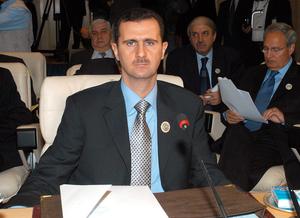The goal now is to bolster the cease-fire at least until the next round of negotiations. But without agreeing on Assad’s future, fighting is likely to resume on all fronts.
By Zvi Bar’el, Haaretz
The past few days don’t bode well for the continuance of the Syrian cease-fire. On Friday, the Al-Qaida-linked Nusra Front and other rebel militias captured the town of Tel Al-Ais near Aleppo. More than 30 combatants (from both sides) died in the battle.
One day earlier, the Syrian air force bombed targets near Damascus, killing at least 33 civilians. And on Saturday, rebel militias attacked Syrian army outposts in the Latakia district in the north; fighting between the rebels and the Syrian army continued in the Daraa district in the south; and the Syrian army captured most of the town of Qaryatayn, near Homs, from Islamic State (ISIS).
Some of these battles, like the attack on Qaryatayn and the clash with Nusra Front, are considered “legitimate,” since neither ISIS nor Nusra Front is included in the cease-fire agreement. But Nusra Front’s forces are intermingled with those of other rebel militias, like Ahrar al-Sham and Jaysh al-Islam, which did join the cease-fire.
The rebels accuse the Syrian army of exploiting its license to attack Nusra Front and ISIS and to attack other militias as well. The Syrian government charges that the rebels are the ones violating the cease-fire. But either way, given the daily clashes, Syrians are already counting the days, if not the hours, until the cease-fire ends – and so are Washington and Moscow.
The goal now is to bolster the cease-fire at least until the next round of diplomatic negotiations, which is supposed to take place in Geneva on April 9. But nobody on either side is waiting with bated breath.
Syrian President Bashar Assad, who is by no means certain to send representatives to Geneva, told a Russian news agency he sees no problem with quickly establishing a transitional government that includes rebel representatives and thinks a new constitution could be drafted within a few weeks. But the opposition continues to insist that Assad not play a key role in the transitional government – a position Assad rejects.
Officially, Washington agrees that Assad has to go, but it doesn’t rule out his playing a role in the transitional government. Last week, U.S. Secretary of State John Kerry met Russian President Vladimir Putin to urge him to pressure Assad, but it’s not clear whether Putin agreed.
Syrian opposition leaders say they aren’t convinced Washington and Moscow actually want a solution. They also complain that the Americans and Russians are hiding information from them.
Assad, who has called parliamentary elections for April 14, is acting is if he were the one who will determine the arrangements for the elections, their outcome and the composition of the next government. He has been bolstered by his success in evicting ISIS from Palmyra, a move considered a military achievement not only by himself, but also by Washington. This enables him to portray himself as the leader of the only force capable of fighting ISIS.
His capture of Qaryatayn from ISIS further strengthens his position. There is no other Syrian force capable of dealing effectively with that organization, while in Iraq, the battle to liberate Mosul from ISIS has been delayed by a political crisis.
UN envoy Staffan de Mistura continues to radiate cautious optimism, but it’s not clear why. Last week, he published 12 principles that are supposed to serve as the basis for Syria’s new constitution. The document contains various nice-sounding ideas: The government should be pluralistic rather than sectarian; the constitution should guarantee human and minority rights; women should comprise at least 30 percent of the parliament.
Meanwhile, De Mistura isn’t even sure he can get the parties to convene on April 9. He admits he has no tools with which to force them to negotiate. He can’t even ensure that humanitarian aid convoys will be allowed to reach areas besieged by Assad’s forces.
Without an agreed plan for continued negotiations, both the government and the rebels are liable to conclude there’s no point in maintaining a cease-fire that isn’t leading to a diplomatic solution. If so, fighting is likely to resume on all fronts, and from there, the road is short to both renewed Russian involvement in Syria and a delay in the war against ISIS.
Yet more fighting won’t guarantee a diplomatic solution, either. At best, both sides would rack up tactical gains or losses, and that situation could continue for years.
This conclusion is shared by senior American and European officials. Thus they are now pinning all their hopes on a solution made in Russia.









